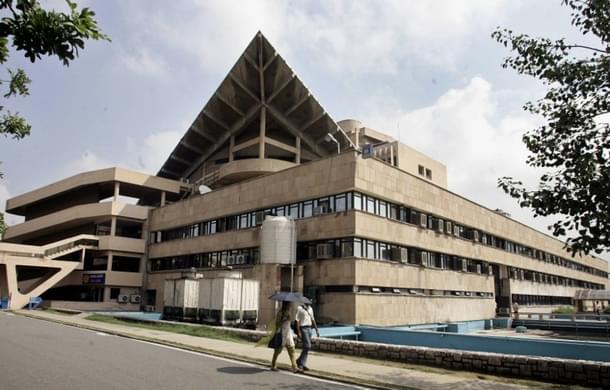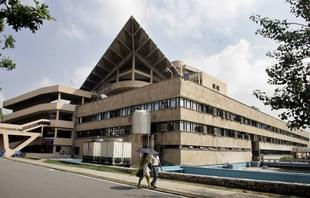Culture
How Academia Works In India
Jaideep A Prabhu
Dec 01, 2015, 04:17 PM | Updated Feb 10, 2016, 05:46 PM IST
Save & read from anywhere!
Bookmark stories for easy access on any device or the Swarajya app.


What does it mean to be an ‘academic’ in India? What is the state of research? Is funding for research concentrated in only a few institutions or do others also get a fair share? These are but few of the issues Swarajya Contributing Editor, Jaideep Prabhu, discussed in an interview with Dr.Kaneenika Sinha, Assistant Professor of Mathematics at IISER-Pune. Dr Sinha was also amongst the thirty scientists Prime Minister Modi met this August to discuss the state of academic science in India.
Jaideep Prabhu: What does academia mean in India? How does one enter into it? [By way of comparison, in the US, anyone teaching at a university and has a PhD is an “academic.” On this note, perhaps you can comment on the rumours that many professors in Indian colleges do not have their PhDs although they are supposed to.
Dr Kaneenika Sinha: The word “Academia” refers to people involved in undergraduate and postgraduate education as well as research. So, this word has the same meaning as in the US. Back when I was a college student, college faculty members in India were not required to have a PhD. This situation has changed now and PhD is a necessary qualification to be hired in government-funded institutes and universities. This may not apply to private colleges.
JP: What is the situation of labs in India? It is often said that the brightest minds prefer to leave Indian shores because they have better facilities in Western countries (and some Eastern countries). On a related topic, how good are the libraries for researchers in India? Is there easy access to books, articles, and research papers from their scientific community?
KS: It is true that a large number among the brightest minds still leave India after their undergraduate education, but it is becoming more and more true that we are able to bring those same minds back after they have been trained at PhD/postdoctoral level in research-intensive institutions abroad. This has been possible due to better job opportunities, an improvement in research infrastucture in India over the last few years and of course, higher pay scales. As such, from a brain drain situation, we are witnessing a slow (but sure) transformation to a positive feedback loop. That is, the brain drain phenomenon is changing into a brain cultivation phenomenon. Through further improvement in science funding and science policies, this phenomenon can be further leveraged to our advantage.
As far as library facilities are concerned, our top research institutions and the IIX institutions have excellent facilities, with access to a large number of journals and books. A person working at an IIT or IISER. for example, can easily get any book or article they need for their research.
At the level of universities and colleges, this is not always true, but this can be addressed in various ways.
Firstly, with the increase in open access online journals, free online repositories of scientific articles (like ArXiv) and authors posting their articles on their own webpages, accessibility to research articles is fairly high.
Secondly, members of colleges and universities which do not have access to certain journals can contact and put in requisitions for required articles to institutions which do.
JP: What is the status of publications in India? Again, in the West, academia goes by the mantra ‘publish or perish.’ Is this the same for Indian universities or is their focus on other things?
KS: In western countries like USA, “Publish or perish” is certainly the mantra in big research-intensive universities. However, they also have many teaching-oriented universities, where faculty are not expected to publish, but have heavy teaching loads (like 4 courses per semester). In the Indian context, the universities have primarily focused on undergraduate and post graduate (master’s level) education and therefore, publishing research papers has not been a significant part of a faculty job. The IIX institutions pay more emphasis on undertaking original research and publishing in peer reviewed journals. A faculty member is evaluated for their research as well as teaching performance. In our research institutions (for example, the Tata Institute of Fundamental Research and other DAE-sponsored institutes without an undergraduate programme), the emphasis is almost exclusively on research publications. So, just like in the west, there is no uniform mantra across academia in India.
JP: How hampered is the development of Indian R&D by budgetary considerations? Do departments or research projects get sufficient funds and attention from the administration?
KS: Indian R&D is mostly supported by the government. We have not reached that stage yet where private corporations invest heavily into R&D. The government, in the past as well as present, has been fairly committed to science departments in India: budgetary allocation is directly related to how well the economy is growing. Better the growth, more the funds.
In a meeting with scientists a couple of months ago, the Prime Minister heard presentations about projects being undertaken in many research areas in India (from the very “theoretical” to the highly “experimental”), how much we have achieved so far and what needs to be done next. He reiterated his commitment to supporting science at all levels. It is also to be noted that the secretaries of several science ministries in India right now (eg, Ministry of Earth Sciences, Departments of Biotechnology and Department of Science and Technology under the Ministry of Science and Technology) are not your typical bureaucrats but scientists with stellar records in their own research work as well as in institution building. Through their understanding of the science challenges in the country, and through continuous discussions with the larger scientific community, the government is trying to evolve an efficient and competitive mechanism for distribution and release of funds for science at all levels.
JP: What, in your opinion, are two or three changes that are most needed in Indian academia? How easily can these be implemented and what is required?
KS: 1) Personal accountability: In North America, to start with, an assistant professor is appointed for a period of 5 – 7 years only. At the end of this period, the candidate goes through a rigorous evaluation of research and teaching credentials: if found satisfactory, they are promoted to associate professor. If they fail to make the grade (and many don’t), they can no longer stay at the institution. Implementing a strict tenure-track system for promotion would go a long way. This system is already being followed at some of our top institutions like the Tata Institute of Fundamental Research, Indian Institute of Science and some of the new IISERs. As more and more of our PhD students are ready to take up faculty positions and more people return from the west to enter the job market, this system across all institutes and universities would also be a very good way to leverage our increased strength in numbers and quality.
2) Empowerment of scientists: While the tenure track system ensures accountability, we also need to empower individual scientists. We need to give individual scientists as well as institutions more say in how money is spent, students are recruited etc. By empowering scientists to utilize money and resources the way they see fit, we can achieve the correct balance of basic and applied research.
A combination of the two points above ensures that the scientist not only has the power and freedom to pursue interesting and challenging frontiers of science, but also the necessary competence and accountability.
3) Minimizing bureaucratic delays: Another thing that would help is simplification of bureaucratic procedures in applying for research grants. In the current scenario, many organizations including the Department of Science and Technology provide grants to individual scientists, teams of collaborators and departments for undertaking research projects, organizing conferences and for improving the infrastructure of the department. Scientists from many universities across India have benefited from such schemes. It would be very nice if the application procedure for the government organizations can be made completely electronic and interactive so that the applicant is aware of the status of their application at all times. A good example is this webpage of the Science and Engineering Research Board of the Department of Science and Technology:
Evolving a mechanism to release grants to successful candidates in a timely manner would also benefit Indian academia.
Jaideep A. Prabhu is a specialist in foreign and nuclear policy; he also pokes his nose in energy and defence related matters.





